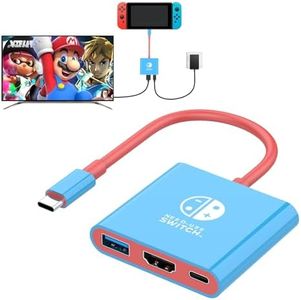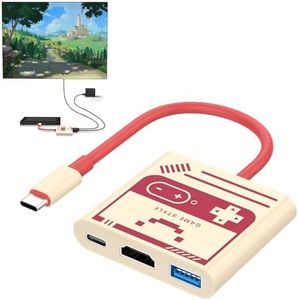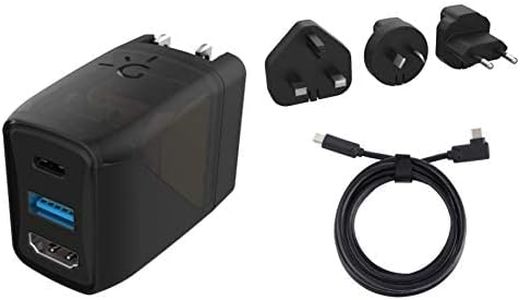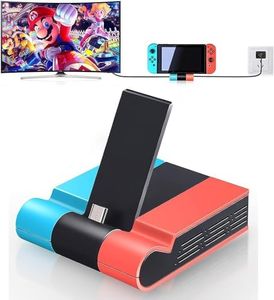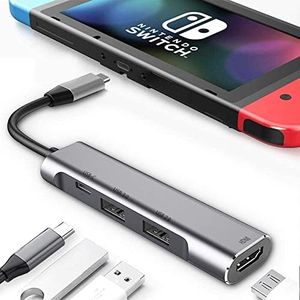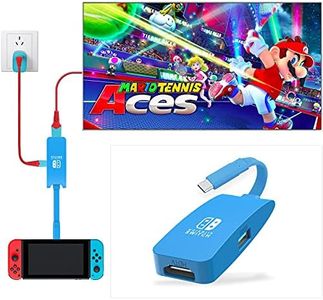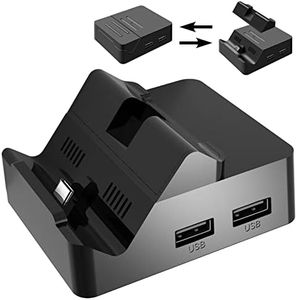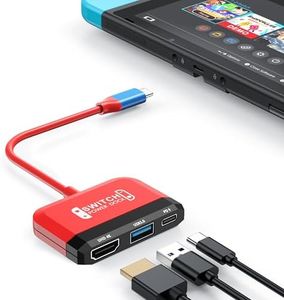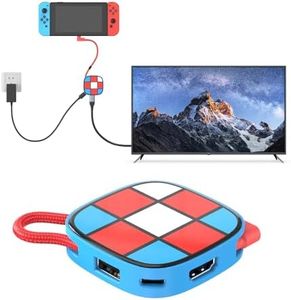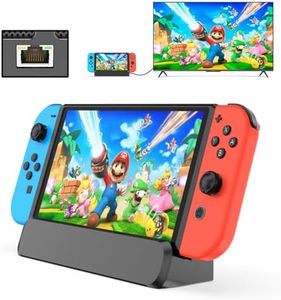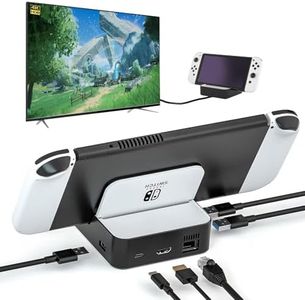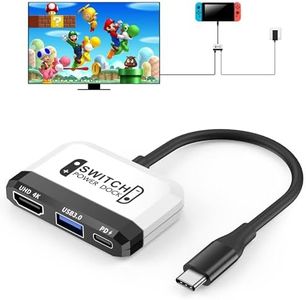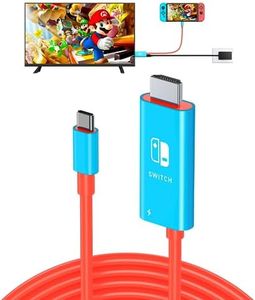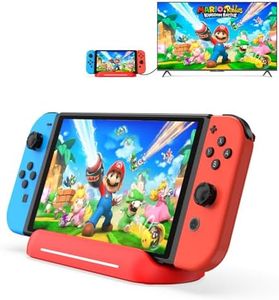We Use CookiesWe use cookies to enhance the security, performance,
functionality and for analytical and promotional activities. By continuing to browse this site you
are agreeing to our privacy policy
10 Best Nintendo Switch Dock Alternative
From leading brands and best sellers available on the web.By clicking on a link to a third party's website, log data is shared with that third party.
Buying Guide for the Best Nintendo Switch Dock Alternative
Choosing a Nintendo Switch dock alternative can be a great option if you're looking for portability, compatibility or special features beyond the original dock. When considering alternatives, it's important to make sure the product can safely connect your Switch to your TV without risking damage, and also that it suits your needs in terms of size, design, and connectivity. Carefully review product details and ultimately focus on how you plan to use your docking solution—at home, on the go, or both.Video Output SupportVideo output support refers to the dock's ability to transmit video and audio from your Nintendo Switch to your TV or monitor, usually via an HDMI port. This is a critical function, as not all third-party docks are reliable in this department, and using an incompatible product can sometimes harm your device. Typically, HDMI 1.4 is sufficient for 1080p output at 60Hz, the maximum supported by the Switch. Always check if the dock explicitly states Nintendo Switch compatibility. If you primarily play on a TV and want the best picture and sound, prioritize docks with robust HDMI output that clearly mention compatibility.
Power Delivery (PD) ChargingPower Delivery (PD) is a standard for delivering higher levels of power over USB-C, allowing both charging and data transfer. For the Nintendo Switch, it's crucial that the dock supports PD at 15V/2.6A, as this ensures safe and adequate charging while docked. Docks with improper or weak charging can damage your Switch or prevent it from working correctly in docked mode. Look for docks that specify compatibility with Nintendo Switch PD charging. If you play for long sessions or leave your Switch docked for extended periods, don't compromise—always choose one with the right PD support.
Port SelectionPort selection defines the types and numbers of connections available—usually HDMI, USB-A, USB-C, and sometimes Ethernet or SD card slots. More ports can offer added flexibility for connecting accessories like controllers, wired internet, or external storage. Consider docks with basic HDMI, USB for charging controllers or connecting a LAN adapter, and avoid overpaying for extras you won’t use. Your decision should depend on what you plan to connect: for TV play only, HDMI is key; for tournament or multiplayer play, more USB or Ethernet might be useful.
Physical Design and PortabilityPhysical design and portability relate to how compact, durable, or travel-friendly the dock is. Some alternatives are as tiny as dongles, perfect for trips, while others mimic the bulkier original dock for stability at home. Compact, cable-based docks are great for portability and taking your Switch to friends’ houses or on vacation. If you mostly play at home and want a setup that looks tidy, a larger, stationary dock may be best. Let your typical use-case—portable travel or home play—guide your choice.
Safety FeaturesSafety features refer to overcurrent protection, overvoltage protection, and the quality of internal components to prevent damage to your Switch. This is especially important because some non-official docks in the past have bricked consoles due to poor design. Look for clear safety certifications or user reviews mentioning safe, reliable use. If you value your device and want peace of mind, only trust well-rated and safety-reviewed products.
